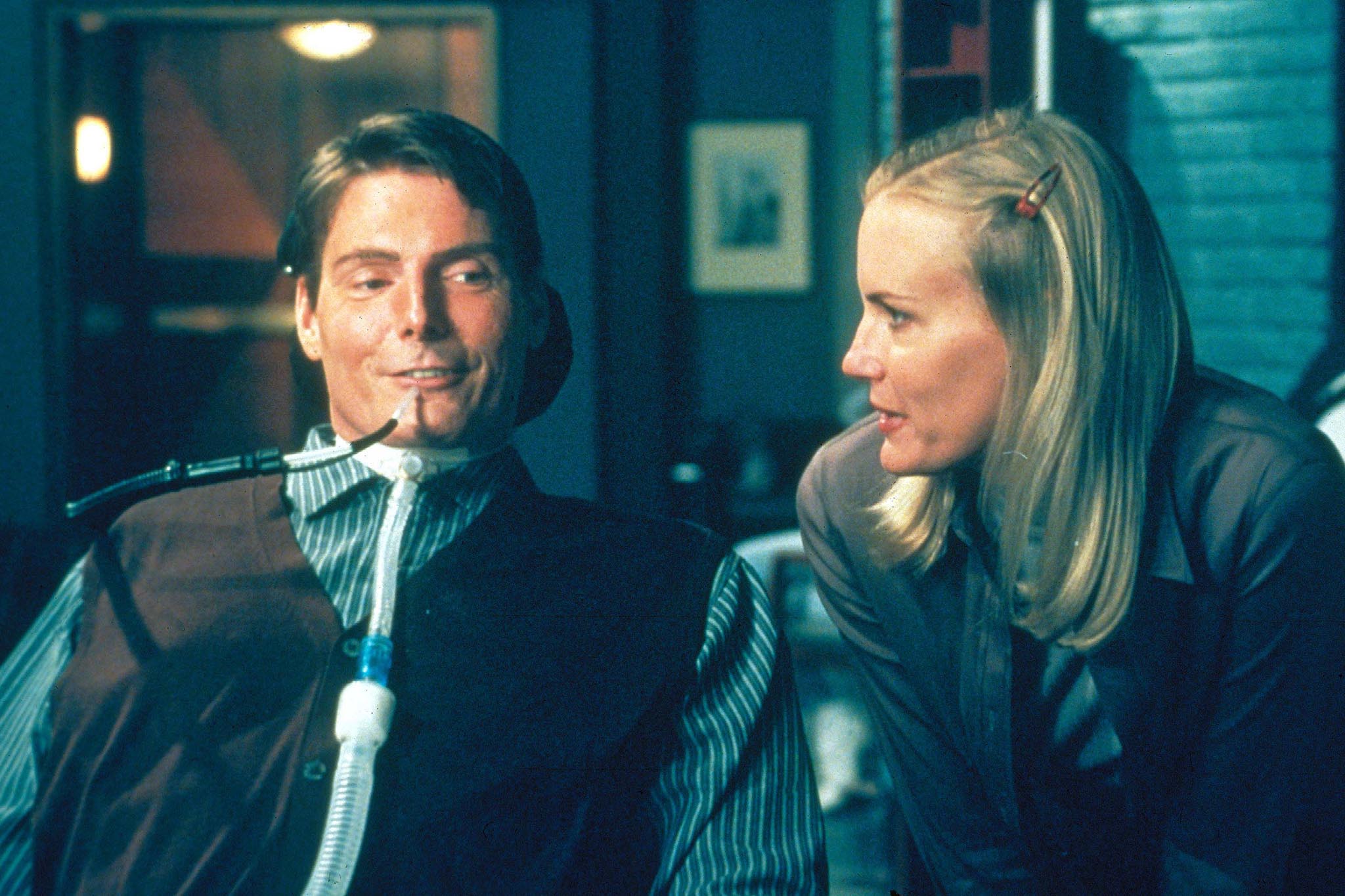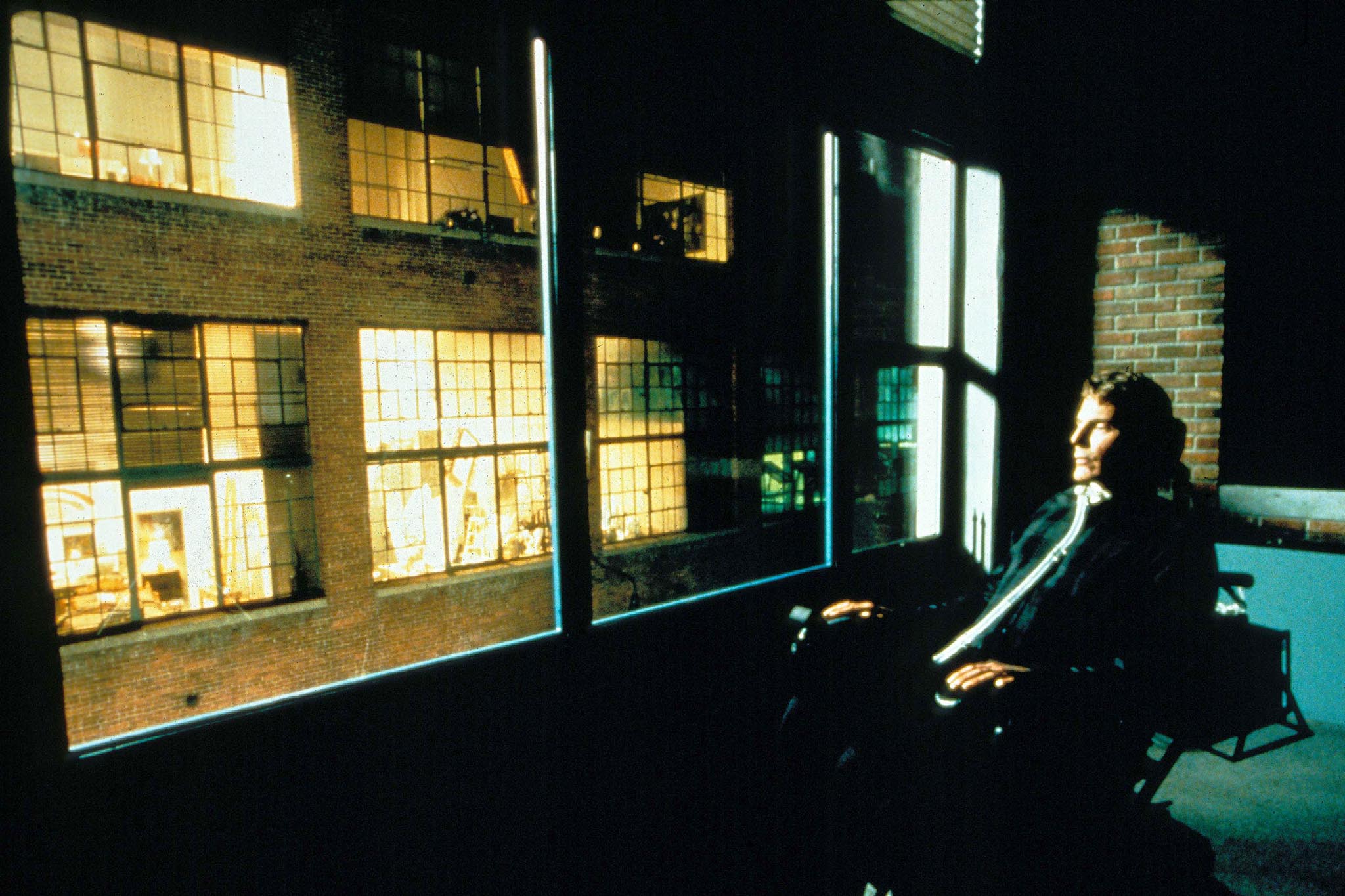Christopher Reeve’s final film was a Rear Window remake – and nobody ever talks about it
Three years after his near-fatal horse riding accident, which left him paralysed from the neck down, the ‘Superman’ star appeared in what proved to be his final film: a made-for-TV remake of a Hitchcock classic. And despite its radical pleasures, it’s been lost to time, writes Geoffrey Macnab

There is a shocking moment early on in a new documentary about the life and death of the Superman star Christopher Reeve. Footage depicts the actor in a hospital bed, shortly after the near-fatal 1995 horse riding accident that paralysed him from the neck down. Something goes awry. He has been unplugged from the machinery keeping him alive. A nurse appears, fumbling desperately to help him. It looks as if Reeve is going to suffocate before our eyes.
But this scene in Super/Man: The Christopher Reeve Story is not from real life. In fact, it’s a staged scene from the actor’s final film: Rear Window, a 1998 made-for-TV remake of the Alfred Hitchcock classic.
Reeve was nominated for a Golden Globe for his performance, but Rear Window has now been almost completely forgotten. You can find the film on YouTube, but you won’t find much mention of it in all the books and articles that have been published about Reeve since his death in October 2004 at the age of 52. It’s as if audiences prefer to remember him as Clark Kent, the strapping son of the planet Krypton, and not as the wheelchair-bound voyeur convinced he’s seen a man murder his wife in the building opposite.
No one is going to pretend that Reeve’s stab at Rear Window is anything approaching the Hitchcock version. It’s a strange hybrid film: a disability drama in the guise of a thriller. The killer (played by Ritchie Coster) is an absurd figure, a posturing sculptor with a goatee and earring whose “mockney” accent makes him sound like he’s just absconded from a Guy Ritchie crime caper. In its lesser moments, the movie resembles episodes of those slick TV dramas that its prolific director Jeff Bleckner used to make – shows such as Hill Street Blues and Remington Steele.
Some critics saw Reeve’s Rear Window as a vanity project on behalf of its star. “Frankly some of us have had it up to here with his courage in the face of adversity,” writer Tom Shales somewhat cruelly complained in The Washington Post. Shales believed the film to be a shameless attempt to further burnish Reeve’s credentials as an all-American hero.
There was also a nagging suspicion Reeve had taken the role for the money. As the new documentary reveals, Reeves needed constant care in the aftermath of his accident, and his insurance coverage stretched only so far. “Right after the accident, one of the first questions he had was ‘how am I going to provide for my family’,” explains filmmaker Ian Bonhôte, who directed Super/Man with Peter Ettedgui.
The counter-view, though, is that Reeve’s Rear Window is groundbreaking and highly unusual: this is a primetime television, mainstream romantic thriller with a disabled male lead. And, for once, with a disabled character actually being played by a disabled actor. “I thought it was a great idea,” Reeve later explained. “I’d like to see more roles for disabled people where they’re cast in the lead instead of being the villain, or pathetic or whatever … just normal people.”
We knew it was so important for him to have his rest and have his physical rehab each day. We just made ourselves content with the time we had with him – and it came out well
In the original Hitchcock feature, James Stewart was a photographer with a broken leg, peering furtively at the lives of his neighbours through his telephoto lens. In the Reeve version, the protagonist, Jason Kemp, is a divorced architect. A headlong car crash has left him in a wheelchair. He begins his peeping Tom behaviour primarily because he’s lonely. As he watches from his loft apartment, the neighbours opposite drink and have sex. They also fight, hurl furniture, and throw tantrums. Kemp jokes that “after dark, this whole building goes from a PG-13 to a hard R”.
It’s clear that Kemp soon gets a kick out of his voyeurism. So does his beautiful young architect assistant, Claudia (Daryl Hannah, in a role similar to that played by Grace Kelly in the original feature). They flirt outrageously with each other. She jokes that, if she was Kemp’s neighbour, she’d put on “a floor show” for him. He responds that he’d be watching her “all the time”. The couple don’t hide their attraction for one another.

Early on, Kemp’s disability is foregrounded. His former colleagues from the architecture office shuffle uneasily around him. “Most people don’t know how to look me in the eye,” Kemp says. “This wheelchair just freaks them out.” As the plot develops, though, the filmmakers forget about trying to make us sorry for the protagonist. Instead, his physical condition is used to crank up the tension. When the killer comes over to his apartment, we know that he won’t be able to run away or hide.
The set-up is contrived, but it’s supposed to be. This isn’t an earnest, inspirational drama. It’s a suspense-driven crime story that cleaves close to the original Hitchcock plot (and to the 1942 Cornell Woolrich story from which it was adapted). The script has been modified to reflect Reeve’s paralysis, but retains many of Hitchcock’s main themes. Reeve’s Kemp relies on cunning and then-new technology, including email and computer passwords. He has a range of electronic devices that enable him to bolt doors and protect himself from his assailant. Like Stewart’s character, he is a conspirator, a gossip and a womaniser.
For Reeve, the role was a huge physical challenge. “His people were very upfront that he only could work certain hours,” the film’s co-producer Jonathan Starch tells me. “Production accommodated those certain hours. There are a lot of night scenes in the movie. Most of these were done with a double because it was not recommended for him to work long hours or into the night.”

On set, Reeve had a small army of physicians and personal trainers at his disposal, and Starch remembers the actor’s professionalism. “He was very gracious to everyone working on the film, knowing that everybody had to do things differently because of his condition.” He recalls the “huge reservoir of good feeling” toward the star from the crew and his fellow actors. They all realised how hard he had to work. No one would ever ask him to “do one more take” or spend extra time on a scene. “We knew it was so important for him to have his rest and have his physical rehab each day. We just made ourselves content with the time we had with him – and it came out well.”
The movie was shot close to Reeve’s home in Bedford, New York, to limit his travel time. “We had a location just outside the Bronx on the Hudson River that was an old elevator factory,” Starch says. “It had two buildings so we were able to shoot from one building to the other.”
At the climax of the film, the killer cuts Kemp’s respirator and he is left gasping like a fish. “[Reeve] practised for this moment,” Starch says. “He’d breathe on his own so he could actually do it in the movie. In real life, he was able to go off his respirator for the amount of time it took us to shoot that scene.”

Perhaps it is not a massive surprise that Rear Window has faded from memory so quickly. After all, Reeve’s non-Superman screen ventures rarely did the opposite. He was a Juilliard-educated actor with an immense range, but he didn’t always choose wisely: he turned down plum roles in everything from American Gigolo to Lethal Weapon. But even his better films were only modest successes, among them the black comedy Deathtrap alongside Michael Caine, or the romantic drama Somewhere in Time. There was arguably something too clean-cut and wholesome about his screen persona. He didn’t bring the sense of danger or mischief you got from a Richard Gere or Mel Gibson – and he couldn’t quite manage to shake off the shadow of Superman.
Anyone stumbling on Rear Window today is likely to regard it as just another run of the mill TV crime thriller – a pale facsimile of the Hitchcock picture. “It’s enjoyable,” Starch says, modestly. “There’s enough variation in it that it’s fun to watch. It’s not going to make anyone forget the original but it’s a good version.”
Then again, there aren’t many other rip-roaring romantic thrillers starring wheelchair-bound actors on ventilators. And once viewers know the backstory, even the most hard-bitten of sceptics will surely appreciate just how remarkable Reeve’s Rear Window really is.
‘Super/Man: The Christopher Reeve Story’ is in cinemas






Join our commenting forum
Join thought-provoking conversations, follow other Independent readers and see their replies
Comments